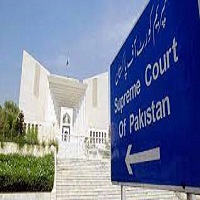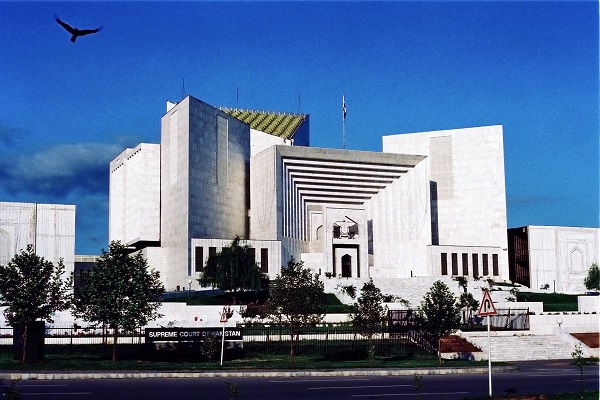The Supreme Court of Pakistan is the apex/top court in the judicial chain of command. It was established in 1947 under constitutional part seventh of Pakistan. It has advisory, original and appellate authority on each court including district court, Shariat Court, Special Court, and High Court.
Supreme Court is headed by the Chief Justice assisted by 16 justices and 2 ad-hoc who are appointed by the President of Pakistan after being nominated by the Prime Minister based on their qualifications. A Chief Justice can serve till the age of 65 years, resignation or involved in conducting misjudgment.
It is the final planner of law that considered to be the final authority of every type of dispute including constitutional and legal disputes. This article contains all the information about the court including Supreme Court of Pakistan History.
| Title | Description |
|---|---|
| Basic Information | |
| Honorable Chief Justice: | Mian Saqib Nisar |
| Since from Chief Justice: | 31 December 2016 |
| Coordinates : | 33°43′41″N 73°05′55″E |
| As Federal Court: | 2 March 1956 |
| In Urdu: | عدالت عظمیٰ پاکستان |
| Including Courts: | High courts, district, special, and Shariat court |
| In 1973: | Restructured by the Constitution of Pakistan |
| Permanent seat: | In Islamabad |
| Supreme Court meets: | Supreme Court Building at the Constitution Avenue |
| First Chief Justice of Pakistan: | Sir Abdul Rashid |
| In 23 March 1956: | The first set of the Constitution of Pakistan was promulgated |
| Reestablished: | In 1956, replacing the name |
| Details | |
| Motto: | So judge between the people in truth |
| Established: | 14 August 1947; 69 years ago (As Federal Court) 2 March 1956 |
| Location: | Islamabad |
| Composition Method: | Executive’s selection with the Presidential confirmation |
| Authorized By: | Constitution of Pakistan |
| Decisions are Appealed to: | President of Pakistan for Clemency/Commutation of sentence |
| Judge Term Length: | 65 years of age |
| Current Executive: | Hon’ble Justice Saqib Nisar |
| Since: | 31 December 2016 |
| Website: | http://www.supremecourt.gov.pk |
Table of Contents
Supreme Court of Pakistan History
British Government abolished supreme courts all over the subcontinent including the supreme courts of Lahore, Calcutta, Madras, and Bombay. They enacted Indian Act 1935 and a number of high courts under the name of Federal court were created in All- Indian Subcontinent. They also abolished the system of Panchayati in independent areas.
After establishing high courts in the subcontinent, the power was given to Federal Court for handling all issues including disputes of presidencies and provinces as well as hearing appeals against the High Court’s judgments The Federal Court was divided between Pakistan and India after the division of the subcontinent in 1947.
Sir Abdul Rashid was appointed as the 1st Chief Justice of Pakistan by Mohammad Ali Jinnah while Harilal Kania was appointed Indian’s First Chief Justice. The government of Pakistan acted under the Indian Act of 1935 and after its first constitution in 1956, the name of the Federal Court was changed to Supreme Court and seated in Karachi, the 1st capital of Pakistan, and both were moved to Islamabad in 1964.
1973 Constitution (Part VII)
The current system of the Supreme Court was structured in the 1956 constitution and was restructured by the government of Pakistan under the 1973 constitution. A part of the constitution (Part – VII) was added which deals with responsibilities, rules, and power of the Supreme Court. Part VII of the 1973 constitution defines the following.
- Supreme Court’s Composition – Article (176)
- Chief Justice’s Appointment and Qualification – Article (177)
- Taking Oath – Article (178)
- Chief Justice’s Retirement – Article (179)
- Vacancy, incapability, and absence of Chief Justice – Article (180)
- Vacancy, incapability, and absence of Justices – Article (181)
- Selection of Ad – hoc Justices – Article (182)
- Court’s location – Article (183)
- Authority of transferring location – Article (186 – A)
- Supreme Court’s Decision nature – Article (189)
- All of the judicial departments are bounded to facilitate Supreme Court
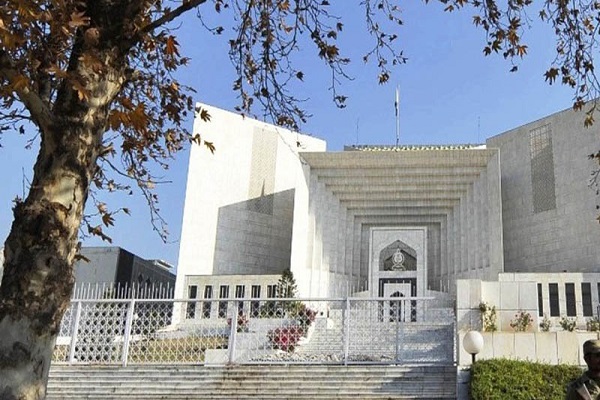
Eligibility Criteria
Chief Justice is appointed by the Prime Minister of Pakistan based on their qualification and experience. Once the PM appoints Chief Justice, is then nominated by the President of the country. Eligibility criteria for a Chief Justice are defined in the constitution which comprises the following points.
- Chief Justice of Pakistan must be a citizen of Pakistan
- Have served High Court as an advocate for 15 years
- Have served as a judge in High Courts for not less than 5 years
Ad – hoc
Ad – hoc judges are appointed by the Chief Justice of the Supreme Court under Judicial Commission. The nominated judges are then confirmed by the Prime minister. Currently, there are two ad hoc justices who are selected from the federal court of Shariah.
Justice of the Supreme Court can only be detached if involved in misconduct of decisions. Only the hearings of the judicial council of the court can decide the detachment of a judge.
Court’s Contempt
1973 constitution provides power to Supreme Court for exercising its power to punish anyone who is involved abusing, obstructing, scandalizing, or interfering in the rules of the court. The power was further increased by empowering Supreme Court to punish any federal official who is involved in abusing or misconduct in the rules of the court.
The former Prime Minister, Syed Yousaf Raza Gillani is the living example who was founded against the rules and was banned from joining any government office of the country as well as removed from the post of Prime Minister.
Independence of Judiciary
Article 17 of the 1973 constitution provides independence in power and practices to the judiciary which is named in chapter One as Freedom of association. It provides a safeguard to the judiciary in practicing against violators of the law.
Chief Justice of Supreme Court in 1997 was Iftikhar Chaudhry who presented an example of freedom of judiciary by barring Prime Minister Syeds Yousaf Raza Gillani who was charged for not following the orders of the court.
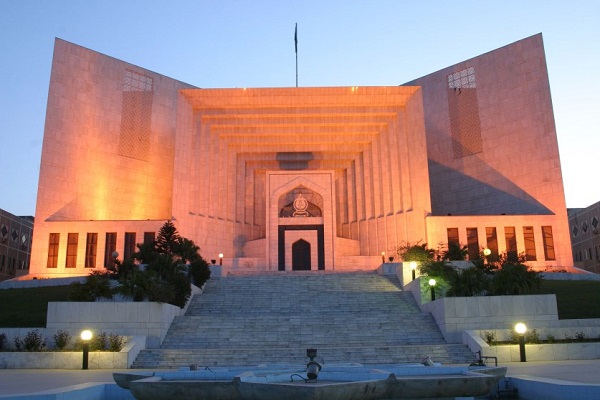
Supreme Court of Pakistan Judges
The list of judiciary contains a total of 19 justices which include two ad hoc judges and two vacant positions. The list of judges of the courts is as follows.
- Syed Mansoor Ali Shah – High Court of Lahore
- Gulzar Ahmad – High Court of Sindh
- Sajjad Ali Shah – High Court of Sindh
- Umar Ata Bandial – High Court of Lahore
- Sardar Tariq Masood – High Court of Lahore
- Ijaz Ul Ahsan – High Court of Lahore
- Qazi Mohammad Amin – High Court of Lahore
- Aminuddin Khan – High Court of Lahore
- Syed Mohammad Mazhar Ali – High Court of Lahore
- Yahya Afridi – High Court of Peshawar
- Qazi Faez Esa – High Court of Baluchistan
- Munib Akhtar – High Court of Sindh
- Mazhar Alam – High Court of Peshawar
- Maqbool Baqar – High Court of Sindh
- Mushir Alam – High Court of Sindh
- Khalid Masood – Court of Shariat
- Mohammad Al Ghazali – Court of Shariat
Supreme Court of Pakistan Structure
The building of the Supreme Court is designed by Kenzo Tange, a Japanese architect who was supervised by Environmental Protection Agency and CDA Engineering. The court contains Chamber Block for judges, Central Block and Administrative Block while covering a total area of 339861 square feet.
The chamber of the judges complex contains many meeting areas, a library for Law, a conference room, a cafeteria, a dining hall as well as lecture auditorium. The Library of the court contains 72 thousand books of Law that facilitate the lawyer and judges.
Museum
In 2010, Chief Justice Tassaduq Hussain Jillani presented the idea of the museum in order to preserve the history of the pre and post-independent era for the researchers. The museum contains photographs, personal belongings, oral histories, and fine arts which are considered assets for researchers.
Jurisdiction/ Command/ Authority
1973 constitution of Pakistan provides full independence to the judiciary under article VII, Chapter I. The court has advisory and original command on all of the departments. It also has the authority to resolve issues under law and is not answerable to any department excluding Supreme Court.
Furthermore, justices are facilitated with free housing, free electricity as well as free medical facilitations under the act of 1973 constitution.
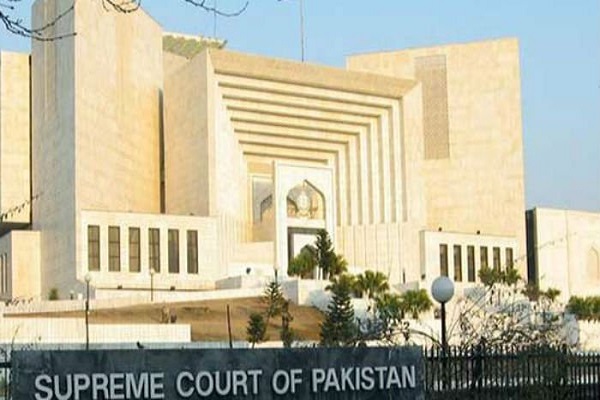
Registry
Supreme Court’s registry contains registrars, deputy registrars, and additional registrars, Law Clerks and Gazette officers, who assist the officers appointed by Chief Justice and approved by the President. The branches of registry offer justice to all sorts of arguments, disputes, and crimes. The court has a total of 5 registry offices in the following destinations.
Bar Association of Supreme Court
All of the advocates of the court are needed to be members of the Bar Association of Supreme Court so that they could appeal the case to the Supreme Court. In 1989, Supreme Court Bar Association was established which contains the layers of the Supreme Court, appointed throughout Pakistan. The bar association is administered by the executive council which contains a president, secretary as well as twenty-two elected members.
Members of the association have the authority to access law periodicals, the library of the Supreme Court as well as research collections.
Ruling Process
Supreme Court has the authority of framing its own rules in order to regulate the court’s process. All of the cases are processed by advocates and Clerks which are presented to the court via certiorari.
It has also the power to shift any case to any High Court of the country for further process and trial. The orders and obligations of the Supreme Court after hearing, petition and review, are considered to be full and final as well as followed by all courts of Pakistan.
Criticism
A number of critiques have written much as well as criticized the Supreme Court of Pakistan. One of the main issues is the freedom of the Judiciary which is defined by the constitution of 1973 but not followed in the real sense and we can imagine it as many dictators of Pakistan have violated the rules of the Supreme Court.
These dictators include Zulfiqar Ali Bhutto and former president and General Pervez Musharraf who arrested Nawaz Sharif and became the president as well as Army General at the same time which is criticized by many authors and politicians.
These Marshal Laws resulted in the violation, formation, and amendments in the constitutions which can even be worst for the future generation of Pakistan.
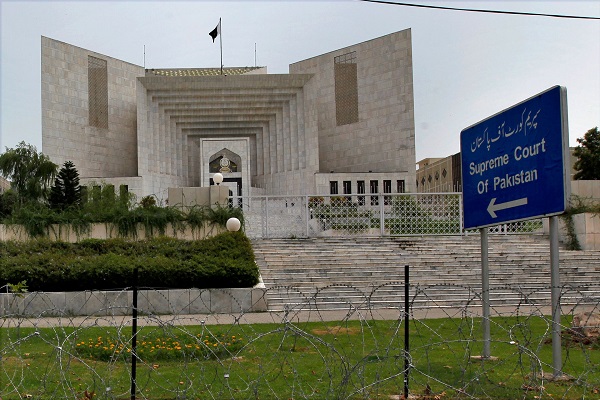
Supreme Court of Pakistan Contact Number
Phone Number: +92 5192 20 581-600
Website: https://www.supremecourt.gov.pk/contact-us/
